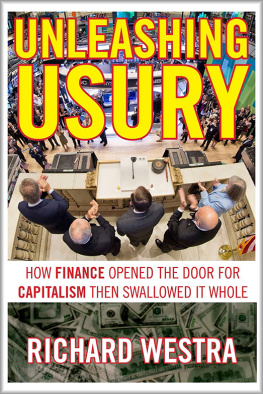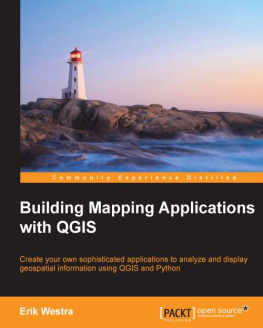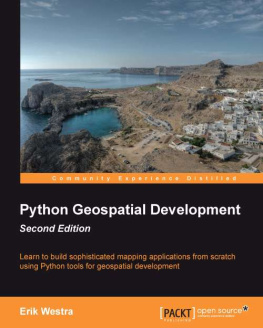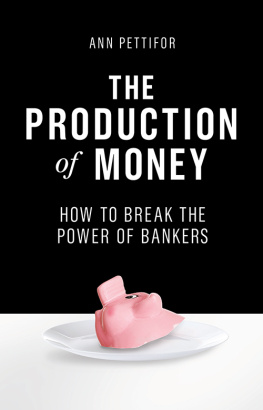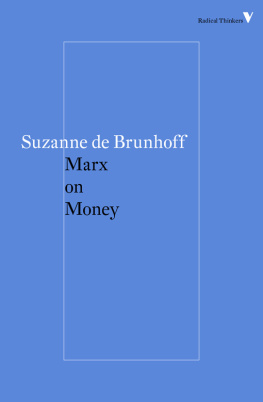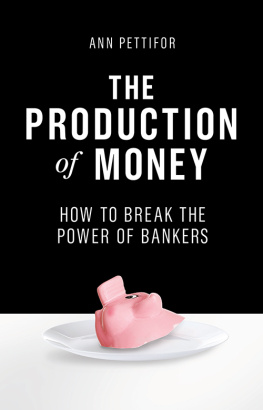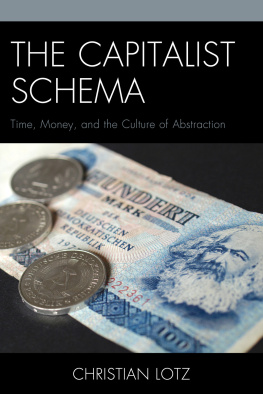2016 Richard Westra
ISBN: 978-0-9860853-3-8
EBOOK ISBN: 978-0-9972870-0-4
In-house editor: Diana G. Collier
Cover: R. Jordan P. Santos
ALL RIGHTS RESERVED: Except for purposes of review, this book may not be copied, or stored in any information retrieval system, in whole or in part, without permission in writing from the publishers.
Library of Congress Cataloging-in-Publication Data
Clarity Press, Inc.
2625 Piedmont Rd. NE, Ste. 56
Atlanta, GA. 30324 , USA
http://www.claritypress.com
ACKNOWLEDGMENTS
The writing of this book has been influenced by work of numerous scholars. In particular, Robert Albritton, Thomas Sekine, John R. Bell, Makoto Itoh, Martin Hart-Landsberg, Patrick Bond and Seongjin Jeong deserve mention. Thomas Sekine, in particular, has performed an invaluable intellectual service in bringing some of the most important developments in Marxian economics since Marxs Capital to light for an English speaking audience. His translation and then brilliant reconstruction and advancement of work by Japanese Marxian economist Kz Uno not only reestablishes Marxs economic thinking on a modern footing; it demonstrates that abiding questions in Marxian economics and political economy around which debate in Western academies continues to swirl, unbeknownst to current self-styled Western Marxist gurus, has been answered at levels of logical consistency and conceptual adequacy that their own writings never attain.
In fact, for Japan itself, caught for decades in a deflationary spiral, notwithstanding trillions of yen being pumped onto bank balance sheets, and negative interest rate policy being rolled out in frantic desperation, policymakers would do well to dust off copies of their own masters, such as Uno. That, instead of slavishly swallowing the snake oil peddled in neoliberal dominated Western academies.
As usual, in the process of refining ideas developed in this book I received valuable feedback at select scholarly gatherings. I have had the good fortune over the past decade to be associated at various points with a research collective on capitalism and challenges to it. The home base of this research collective is the Institute for Social Science, Gyeongsang National University, Jinju, South Korea. Most recently, from December 2013, I have participated as a co-researcher in the activities of that Institute supported by National Research Foundation grant NRF-2013S1A5B8A01055117. Two current conferences where I showcased my work that I would like to mention are: the inaugural conference From the Thirty Years Crisis to Multi-polarity: The Evolution of the Geopolitical Economy of the 21st Century World, University of Manitoba, Winnipeg; and the 63 Annual Conference of the Japan Society of Political Economy (JSPE), Hitotsubashi University, Tokyo.
I have also benefitted from discussions with excellent graduate students here at Nagoya University Graduate School of Law including Wenjia Sun and Volga Can Ozben. Nagoya University is a place where research output is highly valued. The generous time schedule for balancing teaching with research and writing has been a boon to my work. Much appreciated also is the leave I was granted to take up a post as Visiting Professor at the Institute of Political Economy, Carleton University in Ottawa, Canada. Laura Westra offered expertise on Latin terms spicing up the writing in this book. Ayako Fujii provided extremely valuable assistance in preparing the Index and List of Abbreviations. Ann Westra supported me in ways too numerous to itemize.
Whatever faults reside in this bookwell, those are my responsibility.
Richard Westra
Ottawa, Canada
2016
LIST OF ABBREVIATIONS
ABS: asset backed security
ARM(s): adjustable rate mortgage(s)
AUM: assets under management
BIS: Bank for International Settlements, the
BOP: balance of payments
BWIMS: Bretton Woods international monetary system
CDO(s): collateralized debt obligation(s)
CDS: credit default swaps
CEO: corporate executive officer
CRA: Community Reinvestment Act
DIDMCA: Depository Institutions Deregulation and Monetary Control Act
DJIA: Dow Jones Industrial Average
EMH: efficient markets hypothesis
EPZ(s): export promotion zone(s)
EU: European Union
FDI: foreign direct investment
FDIC: The Federal Deposit Insurance Corporation
FED: Federal Reserve System
FIRE: finance, insurance and real estate
GDP: gross domestic product
GM: General Motors
GMAC: General Motors Acceptance Corporation
GSE(s): government sponsored enterprise(s)
GVC(s): global value chain(s)
HEL(s): home equity loan(s)
HELOC(s): home equity line(s) of credit
HNWIs: high net worth individuals
ICT: information and computer technology
ILO: International Labor Organization
IMF: International Monetary Fund, the
IPO: initial public offering
ISI: import substitution industrialization
JSPE: Japan Society of Political Economy
M&A: mergers and acquisitions
MBS: mortgage backed security
NASDAQ: National Association of Securities Dealers Automated Quotations
NEM: non-equity mode
NIPA: National Income and Product Accounts
NIRP: negative interest rate policies
OBS: off-balance sheet
OECD: Organization for Economic Cooperation and Development OPEC: Organization of Petroleum Exporting Countries
OTD: originate to distribute
PFI: private financial intermediary
QE: quantitative easing
R&D: research and development
REPO: repurchase agreement
SEC: Securities and Exchange Commission
SEZ(s): special economic zone(s)
S&L: Savings & Loan
SLABS: student loan asset-backed securitization
SIV: special investment vehicle
TNC: transnational corporation
TINA: there is no alternative
TNB: transnational bank
UHNWIs: ultra-high net worth individuals
US: United States
WB: World Bank, the
WWI: World War I
WWII: World War II
ZIRP: zero interest rate policies
PREFACE
To make the case that changes across the capitalist world at the turn of the 21st century put into play a global financial system which operates as a reincarnation of ancient usury requires several key steps.
Chapter One, using broad brush strokes, introduces the problem.
Chapter Two takes the reader on a fascinating journey back into West European history to see antediluvian loan capital or usury in action as it helped to bring then civilization to the brink of collapse.
Chapter Three shows how capitalism chained Shylock as it reset finance and trade with socially redeeming purposes tied to the nexus of capitalist profit making and the social prosperity capitalism initially spreads.
Chapter Four follows the trail capitalism blazes as it increasingly forsakes its market operating principles for a welter of extra-economic, extra-capitalist supports to survive in the 20th century. Yet, notwithstanding these supports, what remains of capitalist substance drives advanced economies into crises.
Chapter Five exposes the big lie of the neoliberal era. It shows clearly why there is no longer any capitalism in the 21st century. Production centered economies are largely disintegrated with the activities which had acted as their engines of growth now disarticulated across the globe. What currently exists is a global network of casino economies with financial systems which operate not like capitalist markets, but like Merchants of Venice expropriating wealth through money games.
Chapter Six concludes with a closer look at how wealth is expropriated upwards to a cabal of ber rich. It offers the disturbing prognosis that the current global trend of finance carving pounds of flesh from the bones of humanity is leading toward a new Dark Age of world barbarism.

